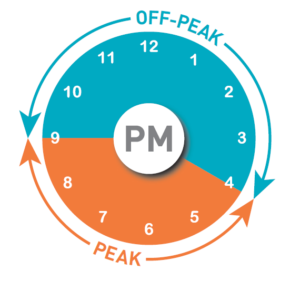FPL already has a new increase in November – TOU

Starting in November 1st. be prepared for this.
What is Time-of-Use (TOU) rate?
Throughout the course of each day, the demand for electricity moves up and down. During “peak” demand periods – such as summer afternoons when air-conditioning usage is high, for example – the cost of generating electricity is more expensive. There are also daily “off-peak” periods when electricity usage is lower, making the cost of producing electricity less expensive. TOU rates provide an incentive to reduce the demand for electricity during “peak” times by allowing customers to pay lower rates for electrical usage during “off-peak” times.
When are the “on-peak” and “off-peak” periods?
FPL’s “peak” hours are listed below. All other hours are considered “off-peak.”
Nov. 1 – March 31: Monday through Friday between 6 a.m. to 10 a.m., and 6 p.m. to 10 p.m. excluding Thanksgiving Day, Christmas Day and New Year’s Day
April 1 – Oct. 31: Monday through Friday during the hours from noon to 9 p.m., excluding Memorial Day, Independence Day and Labor Day
Breaking Down Time-of-use (TOU):
TOU is broken into three main groups based on time of day and amount of electricity demanded. These groups are peak, off peak, and mid-peak (also referred to as shoulder time).
Peak rates are the time of the day when energy demand is the highest. This is usually late afternoon into the evening when people get home from work and start using their appliances more heavily. During this time, local utilities charge the highest rate for the electricity used.
Off peak rates are during the time of day when energy demanded is the lowest. This is usually late morning into early afternoon when the energy being demanded is lower due to significantly fewer people being in their homes.
Mid-peak, or shoulder time, rates are during the time of day when energy demand is ramping up or ramping down. People get home from work and wind down for bed at varying times, therefore making the energy demanded increase and decline over multiple hour periods.
A Brief History of Time-of-use
TOU metering is being implemented by various utilities around the country to ease the strain on the grid by changing consumer behavior. When too much energy is being demanded from the grid, the likelihood of power outages increases. By charging utility customers more during times when energy is statistically demanded more, they create an incentive to use energy during lower electricity demanded hours of the day.

